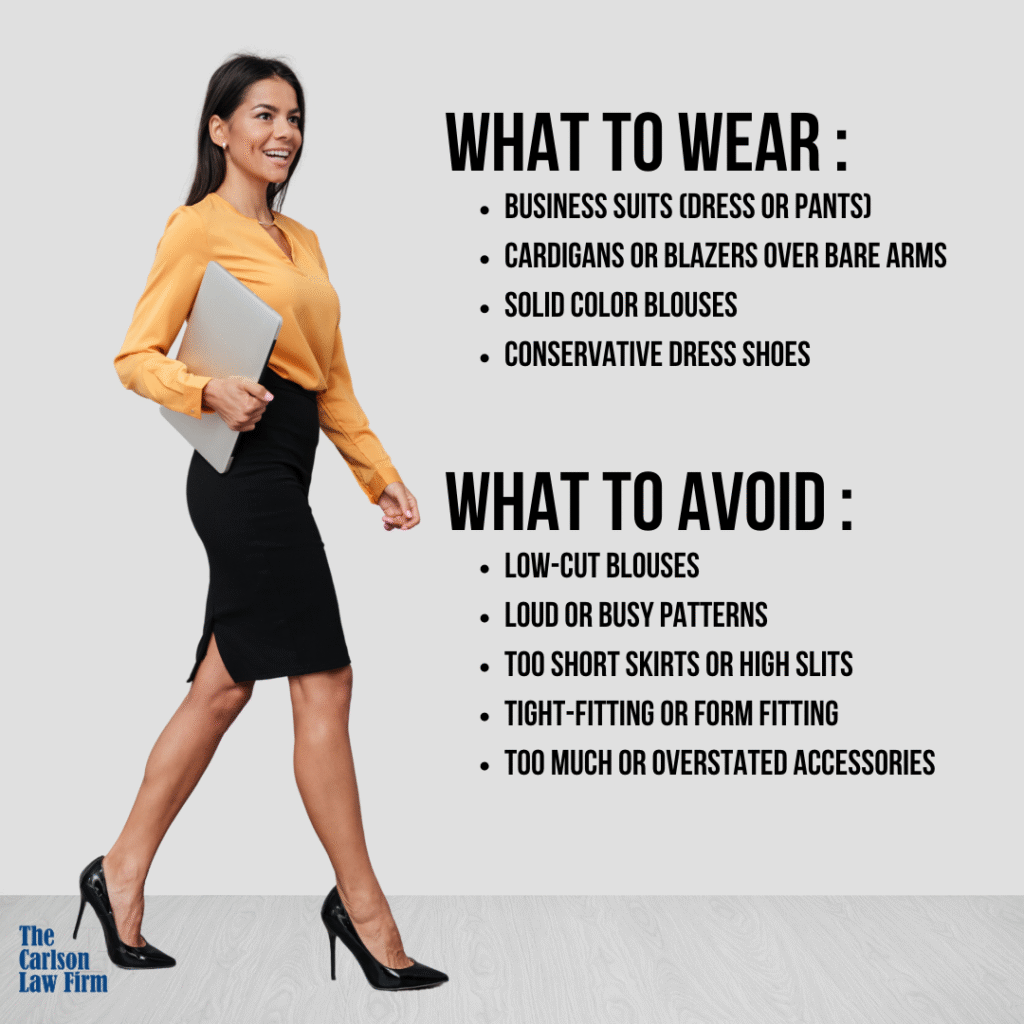
Navigating a custody court appearance can be stressful, but presenting yourself professionally is crucial. Your attire sends a message about your seriousness and respect for the legal process. Choosing the right clothes can help you feel confident and prepared to advocate for your child’s best interests. This article will guide you through the essential considerations for what to wear to custody court, ensuring you make a positive impression on the judge and opposing counsel.
This article will delve into appropriate clothing choices, outlining professional options while highlighting what to avoid. We’ll also discuss courtroom etiquette and emphasize the importance of prioritizing your child’s well-being throughout the process.
Custody Court Attire
When deciding what to wear to custody court, remember that you are appearing before a judge in a formal setting. Your clothing should reflect respect for the court and the seriousness of the matter at hand. Aim for an appearance that conveys professionalism, maturity, and trustworthiness. Avoid anything too casual or revealing, as this can be perceived negatively by the judge and opposing counsel.
The goal is to project an image of someone who takes their parental responsibilities seriously and is committed to working towards a fair resolution. Your attire should complement your demeanor and contribute to a positive overall impression.
Professional Clothing Options

Opt for classic, conservative pieces that are well-maintained and fit properly. Here are some suggestions:
- For Women: A tailored pantsuit or skirt suit in neutral colors like navy, gray, or black is always a safe choice. A knee-length dress paired with a blazer also works well. Choose blouses with modest necklines and avoid anything too tight or revealing.
- For Men: Dress slacks or khakis paired with a button-down shirt or polo are appropriate options. A tie is optional but can add a touch of formality. Avoid jeans, t-shirts, or athletic wear.
Footwear Considerations
Pay attention to your footwear as well. Closed-toe shoes in neutral colors are best. Avoid sneakers, sandals, or anything too casual.
Avoid Unprofessional Dress
Certain clothing choices can be detrimental to your case. Avoid the following:
- Revealing Clothing: Dresses or tops that are too short, low-cut, or tight-fitting can distract from the seriousness of the proceedings and project an image of disrespect.
- Distracting Accessories: Avoid large, flashy jewelry, hats, or sunglasses indoors. These can be perceived as unprofessional and draw unnecessary attention.
- Casual Wear: Jeans, t-shirts, shorts, athletic wear, or anything else considered too casual for a professional setting is inappropriate for court.
Grooming Matters
Remember that your overall appearance matters. Ensure you are well-groomed with neat hair, clean nails, and minimal makeup.
Prioritize Child’s Well-being

While presenting yourself professionally is important, always remember the primary focus of the custody hearing: your child’s best interests. Choose clothing that reflects this priority. Avoid anything that might be upsetting or distracting to your child during the proceedings.
Consider bringing a comfort item for your child if they are attending the hearing with you. This can help them feel more secure and at ease in the potentially stressful environment.
Courtroom Etiquette
Beyond attire, remember basic courtroom etiquette:
- Arrive on Time: Punctuality demonstrates respect for the court and all parties involved.
- Be Respectful: Address the judge as “Your Honor” and other individuals respectfully. Avoid interrupting or speaking out of turn.
- Listen Attentively: Pay close attention to the proceedings and follow the judge’s instructions carefully.
Conclusion
Choosing the right attire for a custody court appearance is essential for making a positive impression and advocating effectively for your child’s best interests. By opting for professional, conservative clothing that conveys respect and maturity, you can contribute to a successful outcome in your custody case. Remember to prioritize your child’s well-being throughout the process and adhere to courtroom etiquette for a smooth and respectful experience.
